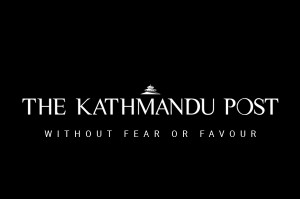Valley
Bhadgaule topi winning over young hearts
For makers of the traditional Bhadgaule topi, the recent years have meant return of the good times, albeit after a long period of lull.
Anup Ojha
Many years ago, in the Panchayat era and earlier, the traditional black cap, produced by artisans in Bhaktapur, used to be the preferred accessory for men in Kathmandu. It wasn’t just preferred for formal occasions or daily wear—all Nepali men had to don one if they wanted access to government offices and in halls of power, such as Singha Durbar. In fact, says, Krishna Mohan Rajbhandari, a seventy-two-year-old milliner (a person who designs, makes, or sells hats) from Choche, in Bhakatpur, who has been in this profession for close to 60 years, every male in Kathmandu used to wear the cap, because a bare head signified mourning.
But then, around 50 years ago, the more colourful Dhaka topi—mostly produced in Palpa—started making inroads into the Kathmandu market. And then in 1990, the Panchayat era came to an end—and with that the requirement that all Nepali males had to wear a Bhadgaule topi if they were to avail of services in government offices. And while these changes were taking place, Nepali men were increasingly opting for Western-style suits as the preferred formal wear, too. And thus the Bhadgaule topi industry almost cratered.
“But our business is picking up,” says Rajbhandari, who today, to meet the growing demand fo Bhadgaule topi, works from sun up to sun down in a dark room filled with bundles of black silk-cloth and muslin, which are the only materials used for making the cap (the small brass emblem of crossed khukuris is the only additional adornment). These days, Rajbhandari and his workforce of six milliners sew close to 600 caps a week. The caps sell for between Rs 300 and Rs 450 in the retail market.
That increase in demand, says Om Dhaubhadel, a cultural expert from Bhaktapur, is mainly a result of a change in the mindset of men in both Kathmandu and Bhaktapur. “For one,” he says, “many men in the Valley—and beyond—have started wearing the daura suruwal—which must be accompanied by a Nepali cap—during wedding parties and so on, instead of Western-style suits. It could be that they are reclaiming their Nepali identity.
And for formal occasions, many of them prefer the sedate look offered by the Bhadgaule to the colourful Dhaka topi. And two, many Newari men in the Valley now increasingly attend festivals attired in their traditional dress—for which, the Bhadgaule topi is a must. The Newari men, too, are increasingly proud of their identity, and thus the renaissance of their traditional clothes.”
Rajbhandari and a handful of other milliners in Bhaktapur stuck with their trade through the lean years. As the country went through changes, their fortunes dipped and soared with the changes too.
“Now, things have come full circle for us,” says Rajbhandari.




 10.12°C Kathmandu
10.12°C Kathmandu.jpg)











